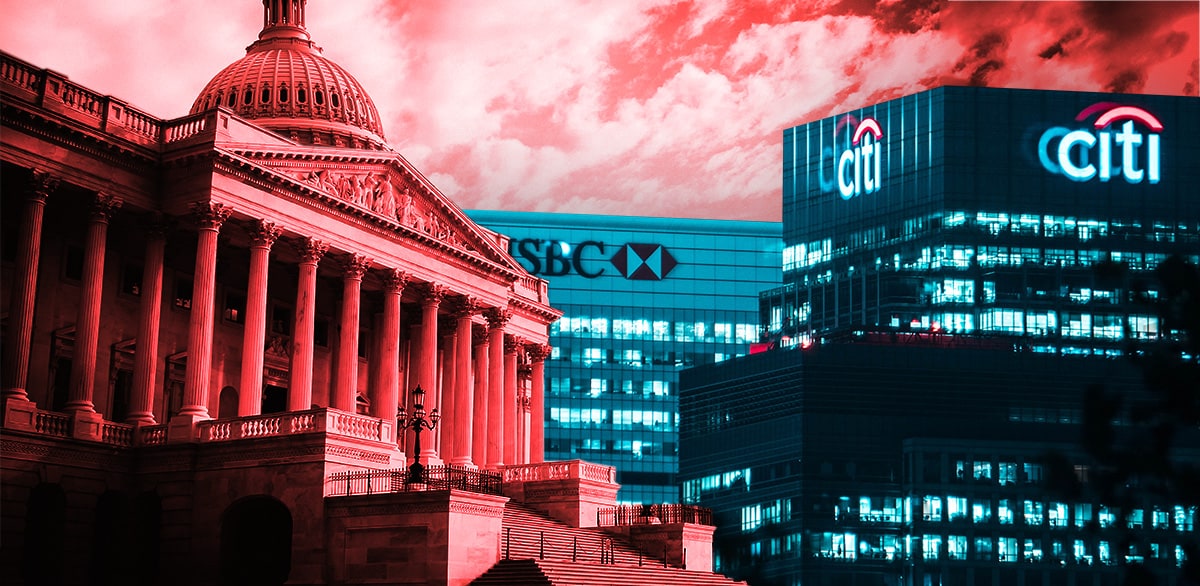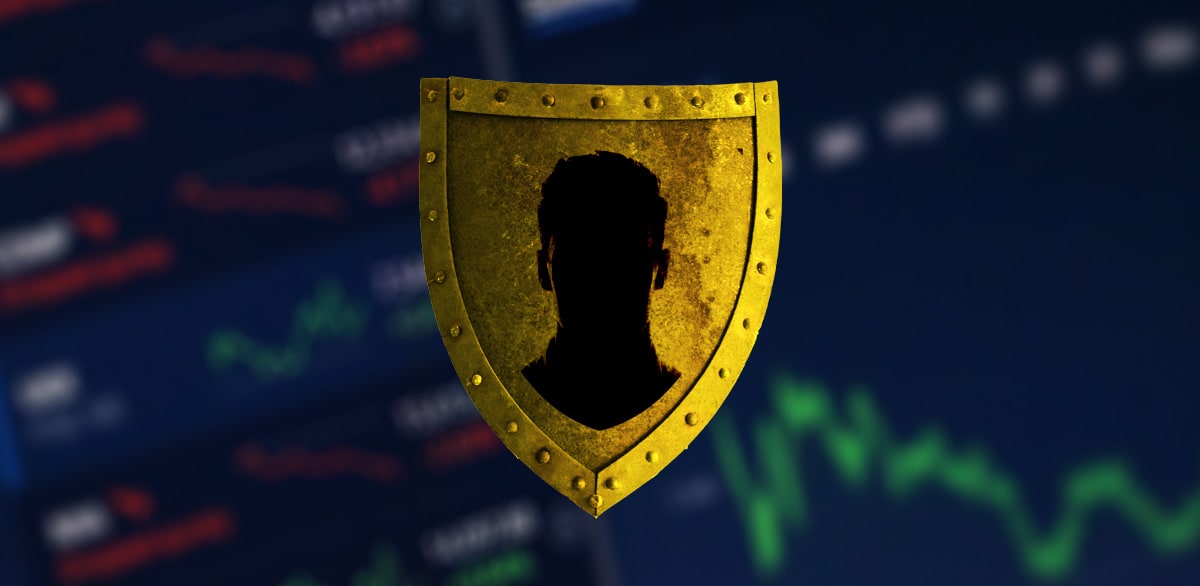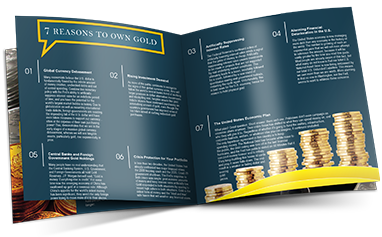
Overview
During the Great Recession the United States government spent $700 billion in taxpayer dollars to bail out the banks that had caused the financial crisis in the first place.[1] After that, Congress passed laws to ensure the government would never bail out Wall Street in the future, but that doesn’t necessarily mean your money will be safe during the next financial crisis. The end of the bank bailout era ushered in the beginning of the bank bail-in, which could put not just your tax dollars at risk, but the actual money in your bank account.
Bailout vs. Bail-In At a Glance
Bank Bailout: The government uses taxpayer dollars to buy out toxic assets and infuse capital into failing banks to keep them from going under.
Bank Bail-In: Rather than using taxpayer money to infuse banks with capital, banks can seize money from depositors, turning debt into equity to keep the bank afloat.
How Bank Bailouts of The Great Recession Ushered in the Era of Bail-Ins
The financial crisis that led to the Great Recession of 2007-2008 was driven by massive amounts of irresponsible mortgage lending that triggered a historic crash in the housing market. The banks that spent years playing fast and loose and backing subprime mortgages found themselves on the verge of collapse when people started walking away from homes that had plummeted in value virtually overnight, resulting in mass foreclosures.
Banks started going under, raising the alarm bells in our nation’s capital. The Obama White House warned that some banks were simply “too big to fail.” If the largest financial institutions teetering on the brink of collapse were allowed to go under, the country could fall into a financial crisis even more dire than the Great Depression that gripped the country from 1929 until 1939.
So the United States used $700 billion in taxpayer money to keep the banks afloat. Of course, this angered millions of Americans who were out of work or forced to take a pay cut during those difficult years. Why was that money being used to reward the irresponsible, even criminal actions of a few firms on Wall Street instead of bailing out millions of struggling Americans?
A few years after the bailout Congress passed the Dodd-Frank Act in an effort to prevent any future government bailouts.[2] Cleverly, the politicians were able to find a way to keep the government off the hook next time banks need a bailout. It’s called a bail-in and as you probably expect, it comes at the expense of American bank account holders.
How Does a Bank Bail-In Work?
A bank bail-in serves the exact same purpose as a bail out: to infuse enough money into a bank to keep it afloat. Instead of using taxpayer dollars, a bail-in allows banks to use the money of their own depositors to bail themselves out.[1]
When you put money in a bank, you trust that institution to keep your savings secure. However, in a post Dodd-Frank world you are not simply a customer or depositor – you are actually legally classified as an “unsecured creditor.” That means anyone who carries a balance of over $250,000 could have money taken directly from their account without permission to help keep a struggling bank from going under.[1]
Do Bank Bail-Ins Put Your Money at Risk?
The main purpose of a bank bail-in is to transfer the risk away from taxpayers while giving banks a loophole to keep themselves afloat. Banks can no longer turn to taxpayer-funded bailouts in the face of bankruptcy. Instead, they’ll shift the risk to creditors and their own customers.
Depending on how much of your assets are tied up in a single bank, there’s real risk that a bail-in could put your finances at risk. If the bank you’re holding money in makes bad or risky financial decisions, it could end up using your money to bail itself in, turning debt into equity on the backs of depositors.
This means your money could be serving as a potential get out of jail free card for the big banks propping up our economy. Another deep recession, risky investments or bad management could put banks on the verge of bankruptcy once again. It’s not really a matter of if, but when our country’s largest financial institutions will need an infusion of capital. Next time however, they won’t have Uncle Sam rewarding them for their mismanagement. Their own customers will be left to bear the financial burden.
How to Protect Yourself From Bank Bail-Ins

- The first step you can take toward protecting yourself from a bail-in is keeping an eye on the financial market. Read up on the latest financial news and keep an eye out for indications of turmoil with financial institutions.
- You could also consider spreading your assets across multiple accounts in the United States, keeping each account below the FDIC insured limit of $250,000. It’s important to note that the value of your dollar will still be subject to the pressures of inflation. Additionally, it’s best to discuss such tactics with your financial planner or accountant.
- An increasingly popular option involves diversifying your portfolio with precious metals. Gold and silver have long been viewed as a hedge against inflation. More importantly, gold is real money that you can hold and store.
The largest banks have shown beyond any shadow of a doubt that they should not be blindly trusted with your money. The irresponsible practices that led to the Great Recession weren’t a fluke and the Dodd-Frank Act didn’t do much to prevent a future catastrophe. It simply shifted the financial burden from taxpayers to depositors.
That’s exactly why so many people are diversifying their investment portfolio with gold and silver. If you’re worried about another financial crisis or the value of your dollar plummeting, precious metals may be a great alternative for you. You can store physical gold and silver like gold bars, silver bars, as well as gold and silver coins yourself or store them in a trusted vault outside of the bank’s reach.

Everything you need to know to get started in Precious Metals
Learn how precious metals can strengthen your portfolio, protect your assets and leverage inflation.
Request the Free GuideWith lots of uncertainty going on in the world, including new fears of a housing bubble, it’s not surprising that more and more people are starting to wonder just how safe their money is sitting in a bank. Fears over another potential recession are mounting and if it’s anything like 2008, banks could be in serious trouble.
Be vigilant. It’s not enough to simply speculate about whether a bail-in could be forthcoming. You need to prepare for one as though it’s a sure thing. The best way to do that is by diversifying your investments and precious metals may a great place to start.
Learn more about how Gold and Silver could protect your assets from stock market declines, inflation, or another global financial crisis by requesting a FREE COPY of our popular Gold and Silver Investment Guide Today!

